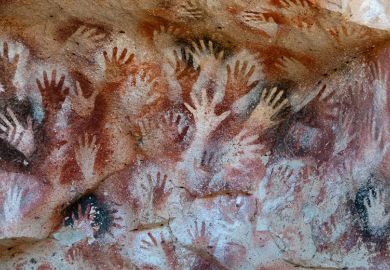Archaeology occupies a unique position, bridging the gap between the “two cultures” of science and the humanities. The inherent tension that this creates within the discipline has been a source of strength but also the focus of much vigorous debate. This book aims to recast archaeology as an entirely scientific endeavour, exploring fundamental issues relating to the archaeological record and posing challenging questions. Anyone familiar with the history of archaeology will have a sense of déjà vu; these debates have been had before, most prominently in the 1960s with the rise of the “new” or “processual” archaeology.
Charles Perreault is an evolutionary anthropologist, interested in how archaeology can contribute to theories of cultural evolution. He has a pessimistic view of the archaeological record (the deposits, layers, pots and burials that we excavate), viewing it as coarse and “underdetermined”. This is because of the myriad ways in which remains become mixed and lost over time, through processes of decay and disturbance, and through the selective means by which we collect and analyse data. His review is thorough and salutary, usefully setting out the empirical basis for what is often assumed, although it suffers from too narrow a focus on archaeological site types typical only of North America. One of the key conclusions, that the archaeological record has a resolution of longer than one human generation, will not hold true for long. The widespread application of Bayesian approaches to radiocarbon dating now regularly produces chronologies with estimates that are shorter than 25 years.
The author maintains that archaeologists are currently slapdash in their interpretations. If the data are consistent with a favourite theory, then that is deemed enough, leading to “unverifiable and likely erroneous” accounts of the past. He dismisses any hypotheses that are not “testable” and, as in a court of law, suggests that we focus only on questions that can be answered “beyond reasonable doubt”. It is very difficult to know what interesting archaeological question could ever be so. The identification of the body of King Richard III buried under a car park in Leicester is perhaps one example. But this was not based on any “smoking gun” that proved a hypothesis, which Perreault claims as necessary, but on multiple strands of evidential reasoning that built up to a compelling argument.
In a further criticism, he contends that archaeologists attempt to interpret the past largely at the level of individual decision-making, based on borrowed theories from anthropology. Having demonstrated the coarse resolution of the evidence, he argues that we should abandon the quest for these micro-scale narratives and instead focus on macro-scale questions. For example, instead of investigating the social function of large feasts held on the Pacific north-west coast, we should look at whether climate affects cultural complexity. A call to focus on the macro-scale is welcome; analysing change over long timescales is a contribution exclusive to archaeology, although it should be noted that global databases suffer just as much from problems of loss and bias. But to abandon the quest for micro- and medium-scale questions entirely? Then we would lose sight of our key interest: the human past. It is only by asking unanswerable questions that we improve methodologies and techniques, and that we push at the boundaries and limitations of the archaeological record. Archaeology should remain that unique combination, a discipline that mixes the findings of scientific endeavour with the imagination and creativity of the humanities.
Susan Greaney is a PhD candidate in archaeology at the University of Cardiff and one of the BBC Arts/Arts and Humanities Research Council New Generation Thinkers for 2019.
The Quality of the Archaeological Record
By Charles Perreault
University of Chicago Press, 264pp, £86.58 and £27.00
ISBN 9780226630823 and 9780226630960
Published 7 August 2019
Register to continue
Why register?
- Registration is free and only takes a moment
- Once registered, you can read 3 articles a month
- Sign up for our newsletter
Subscribe
Or subscribe for unlimited access to:
- Unlimited access to news, views, insights & reviews
- Digital editions
- Digital access to THE’s university and college rankings analysis
Already registered or a current subscriber?







